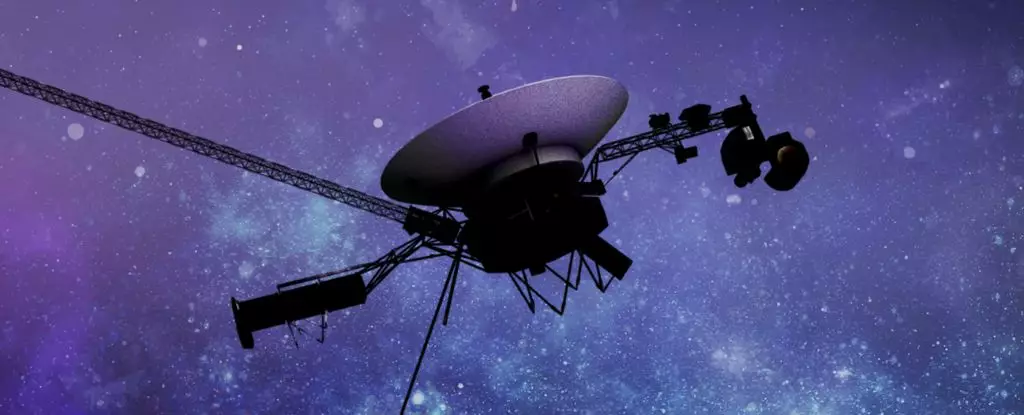The Voyager program, initiated by NASA in the 1970s, represents one of humanity’s most ambitious explorations of the cosmos. Voyager 1, launched in 1977, has journeyed through the solar system and into interstellar space, becoming the most distant human-made object. Its primary missions involved studying the outer planets, but the spacecraft now represents our connection to the unknown frontier beyond the Sun’s influence. Despite its advanced age, Voyager 1 continues to send back valuable data, although recently it encountered an unexpected communication breakdown, spotlighting the challenges faced by aging technology in deep space.
In mid-October, NASA experienced a moment of anxiety when Voyager 1 briefly went silent after a routine command was issued to activate one of its onboard heaters. This seemingly mundane request triggered an unexpected response: the spacecraft ceased communicating with Earth, leaving engineers puzzled. Due to its vast distance—approximately 25 billion kilometers or 15.3 billion miles from home—each communication round trip takes almost 46 hours. Consequently, it wasn’t until two days later that NASA’s ground team realized something was wrong when Voyager 1 missed its scheduled signal return.
Upon investigation, the Deep Space Network (DSN) located Voyager 1’s signal but found that it was transmitting on a slightly altered frequency. This anomaly was traced back to the onboard fault protection system, which had activated to safeguard the spacecraft’s power resources. This system was triggered because the heater request may have drawn too much current, leading to the unintended shutdown of the X-band radio transmitter—the primary communication device with Earth.
The situation worsened when communication failed entirely the day following the initial reconnection. Engineers suspected yet another triggering of the fault protection, which relegated Voyager 1 to the use of its S-band transmitter—a lower-power option that is also considerably weaker. This was particularly concerning because it had been over four decades since the craft had relied on the S-band for communication, raising fears about the feasibility of detecting signals from such a large distance.
Fortunately, by October 22, NASA’s team managed to confirm that the S-band transmitter was operational, quelling fears of a complete communication loss. However, their caution regarding reactivating the X-band transmitter underscores the precariousness inherent in managing equipment that is nearing half a century old. The limitations imposed by aging technology are evident, as reflected in previous glitches where telemetry data sent by Voyager 1 was corrupted or nonsensical, often linked back to failures in its memory systems.
Safeguarding the functionality of not just Voyager 1 but its twin, Voyager 2, is paramount. Both probes are navigating uncharted territories of interstellar space, gathering invaluable information about regions where no other human-made objects have ventured. The ongoing scientific contributions of the Voyager missions enhance our understanding of cosmic phenomena and contribute to a broader comprehension of the universe’s evolution.
However, this scientific journey is time-sensitive. As power supplies dwindle, the Voyagers are projected to cease scientific operations by 2025. Further complicating matters, by 2036, they will drift beyond the reach of the DSN entirely, which would mean losing touch with these remarkable spacecraft.
Looking ahead, the Voyagers are expected to traverse the Oort Cloud, a hypothetical shell of icy bodies surrounding our solar system, and eventually come within two light-years of other stars in approximately 40,000 years. The prospect of these missions continuing for millennia highlights their status as monuments to human ingenuity. Not only do they carry scientific instruments, but they are also vessels of information about human culture, encapsulated in the Golden Records they each bear.
In light of the recent communication challenges faced by Voyager 1, it’s a crucial reminder of the delicate balance between technological legacy and the vulnerabilities of aging systems. Yet, as NASA continues to troubleshoot and maintain these remarkable instruments, we are reminded of the tenacity of human exploration and the hope of connecting with the mysteries that lay beyond our solar system. As we gear up for the next stages of interstellar exploration, the lessons learned from Voyager’s odyssey will undoubtedly inform future endeavors into the vastness of space.

